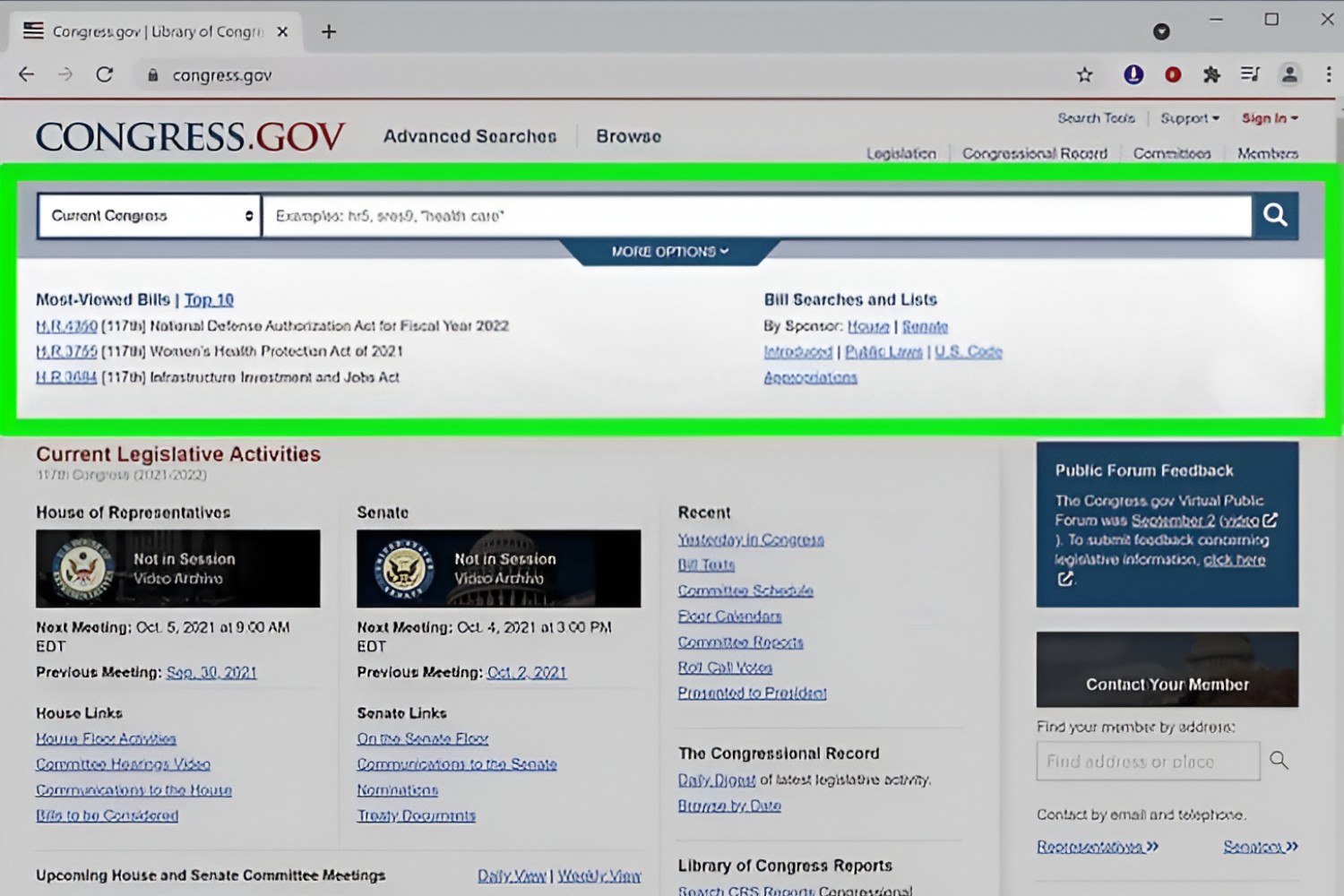Introduction
Welcome to the dark side of the internet – the mysterious and enigmatic realm known as the Dark Web. Far removed from the familiar websites and search engines we use every day, the Dark Web is a hidden network that offers a level of anonymity and secrecy that is unparalleled.
While the internet has revolutionized the way we connect and access information, it is important to recognize that not everything online is visible to the average user. The Dark Web operates on a different plane, housing encrypted websites and hidden services that can only be accessed through specialized software and configurations.
But what exactly is the Dark Web? How does it differ from the surface web that we interact with on a daily basis? And more importantly, how can one safely navigate this shadowy digital landscape?
In this article, we will delve into the world of the Dark Web and explore the steps you need to take in order to access it. We will also discuss the potential risks and dangers associated with venturing into this hidden realm, and provide tips on how to protect your anonymity and stay safe while exploring the Dark Web.
It is important to note that the Dark Web is often associated with illegal activities, such as the sale of drugs, firearms, and stolen data. While it is true that there are illicit activities taking place on the Dark Web, it does not mean that every user is engaged in illegal behavior. Many individuals and organizations use the Dark Web for legitimate purposes, such as secure communication, whistleblowing, and research.
With that said, it is crucial to exercise caution and take the necessary precautions when accessing the Dark Web. Understanding the risks and dangers involved is essential for protecting yourself and ensuring a safe and anonymous experience.
What is the Dark Web?
The Dark Web is a portion of the internet that is intentionally hidden and inaccessible through standard search engines. It is a part of the broader concept known as the Deep Web, which refers to any content that is not indexed by search engines and requires specific software or configurations to access.
Unlike the surface web, which is easily accessible to anyone with an internet connection, the Dark Web operates on a different infrastructure, using anonymous networks such as Tor (The Onion Router) to conceal its users’ identities and protect their online activities from surveillance.
One of the key characteristics of the Dark Web is the use of encrypted websites and hidden services. These websites have addresses that end with “.onion” and can only be accessed by using a Tor-enabled browser. By routing internet traffic through multiple layers of encryption, Tor ensures that a user’s identity remains hidden and their online activities cannot be easily traced.
Within the Dark Web, users can find a myriad of websites offering a wide range of content and services. While it is true that illegal activities do take place on the Dark Web, not all websites and services found there are illicit in nature. In fact, there are legitimate uses for the Dark Web, such as secure and anonymous communication, accessing censored information, and protecting one’s privacy from oppressive regimes or surveillance.
However, it is crucial to understand that the Dark Web also hosts a variety of illegal marketplaces, where drugs, weapons, stolen data, and other illicit goods and services are bought and sold. These marketplaces operate using cryptocurrencies like Bitcoin, making it difficult to trace transactions and the parties involved.
It is important to emphasize that accessing the Dark Web requires a certain level of technical knowledge and caution. The anonymous nature of the Dark Web attracts not only legitimate users seeking privacy and security, but also cybercriminals looking to exploit vulnerabilities.
By understanding what the Dark Web is and how it operates, you can make informed decisions when it comes to exploring this hidden part of the internet. In the following sections, we will explore the risks and dangers associated with the Dark Web and provide steps to help you navigate it safely.
Understanding the Risks and Dangers
While the Dark Web offers anonymity and privacy, it is essential to recognize the potential risks and dangers associated with venturing into this hidden realm.
One of the primary concerns when accessing the Dark Web is encountering illegal activities. The anonymity provided by the Dark Web makes it an attractive platform for cybercriminals to engage in activities such as drug trafficking, human trafficking, hacking, and identity theft. It is important to be aware of the possible presence of illicit marketplaces and avoid engaging in or supporting any illegal activities.
Another risk stems from the very nature of the Dark Web itself. Since websites and services on the Dark Web operate outside the regulatory framework of the surface web, there is a higher likelihood of encountering scams, frauds, and malware. Users must exercise caution and verify the authenticity and credibility of any websites or services they interact with.
The potential exposure to explicit and disturbing content is another risk associated with the Dark Web. While not all content on the Dark Web is illicit, it is possible to come across websites hosting offensive and harmful materials. It is crucial to be mindful of this and take appropriate measures to protect your mental well-being.
In addition to the content risks, there is also the possibility of compromising your own security and privacy. Government agencies and hackers actively monitor the Dark Web, seeking to identify and apprehend individuals involved in criminal activities. It is crucial to take steps to protect your identity and online presence while accessing the Dark Web.
Moreover, there is the risk of inadvertently revealing personal information or accidentally downloading malicious software. It is essential to exercise caution and ensure that you are using reliable software and taking necessary precautions to maintain your anonymity and security.
Lastly, it is important to note that certain countries have strict laws and regulations regarding accessing the Dark Web. Before embarking on your journey, it is advisable to familiarize yourself with the legal implications and potential consequences in your jurisdiction.
By understanding the risks and dangers associated with the Dark Web, you can approach your exploration with heightened awareness and take necessary precautions to mitigate these risks. In the following sections, we will guide you through the steps required to ensure anonymity and security while navigating the Dark Web.
Step 1: Ensuring Your Anonymity
Before delving into the Dark Web, it is crucial to take steps to ensure your anonymity and protect your privacy. Here are some measures you can follow:
- Use Tor: The first and most important step is to use Tor, a free and open-source software that enables you to access the Dark Web while masking your IP address. Tor works by routing your internet traffic through a network of volunteer-operated servers, making it extremely difficult for anyone to trace your activities back to you. Ensure that you download Tor from the official website and keep it up to date.
- Use a VPN: Consider using a Virtual Private Network (VPN) in combination with Tor. A VPN encrypts your internet connection and hides your IP address, adding an extra layer of security. Choose a reputable VPN service that has a strict no-logs policy to ensure your privacy is maintained.
- Disable JavaScript: Disable JavaScript in your Tor browser settings. While JavaScript enhances website functionality, it can also potentially expose your real IP address. By disabling it, you reduce the risk of leaking sensitive information.
- Avoid using personal information: When creating accounts or interacting on the Dark Web, use pseudonyms or usernames that are not linked to your real identity. Avoid using personal information that could potentially compromise your anonymity.
- Use an anonymous email provider: Consider creating a new email account with an anonymous email provider for any Dark Web-related activities. This helps further separate your online activities and identity.
- Encrypt your communication: When communicating on the Dark Web, use end-to-end encryption tools such as PGP (Pretty Good Privacy) or secure messaging apps. These tools ensure that your messages cannot be intercepted or read by unauthorized parties.
By following these steps, you can significantly enhance your anonymity and reduce the risk of compromising your privacy while accessing the Dark Web. However, it is important to remember that no method is foolproof, and it is essential to stay vigilant and keep your security measures up to date.
Step 2: Choosing the Right Software
When it comes to accessing the Dark Web, using the right software is crucial for a secure and seamless experience. Here are some key software considerations:
- Tor Browser: The Tor Browser is the most commonly used software for accessing the Dark Web. It is a modified version of Mozilla Firefox that routes your internet traffic through the Tor network, ensuring anonymity and privacy. Download the Tor Browser from the official website and keep it updated to benefit from the latest security enhancements.
- Tails: Tails (The Amnesic Incognito Live System) is a privacy-focused operating system that can be booted from a USB stick or DVD. It routes all internet traffic through the Tor network and leaves no trace on the host machine. Tails is designed to enhance anonymity and security, making it an excellent choice for accessing the Dark Web.
- Virtual Machine: Using a virtual machine (VM) can provide an extra layer of security when browsing the Dark Web. By running the Tor Browser in a VM, you isolate it from your host operating system, reducing the risk of malware infecting your primary system.
- Additional Security Tools: Consider using additional security tools such as a firewall and antivirus software to protect your system from potential threats. Keep these tools updated and perform regular scans to identify and remove any malicious files or programs.
It is important to note that while the Tor Browser is the most widely used software for accessing the Dark Web, there are alternatives available. However, when choosing an alternative, research and verify its credibility and security to ensure a safe browsing experience.
Remember to always download software from trusted sources. Be wary of counterfeit or modified versions of software, as they may contain malware or compromise your privacy.
By selecting the right software and keeping it updated, you can boost your security and minimize the risks associated with accessing the Dark Web. In the next section, we will explore the process of setting up a secure connection to further protect your online activities.
Step 3: Setting Up a Secure Connection
When accessing the Dark Web, it is crucial to set up a secure connection to ensure your online activities remain private and protected. Follow these steps to establish a secure connection:
- Connect through Tor: Launch the Tor Browser and connect to the Tor network. This will route your internet traffic through multiple encrypted layers, making it difficult for anyone to trace your activities back to your IP address.
- HTTPS Everywhere: Install the HTTPS Everywhere extension on your Tor Browser. This extension forces websites to use the secure HTTPS protocol whenever possible, encrypting your communications and reducing the risk of eavesdropping or tampering.
- DNS Leak Protection: Enable DNS leak protection within your Tor Browser. DNS leaks occur when your ISP or another intermediary is able to see which websites you are accessing, compromising your privacy. By enabling DNS leak protection, you prevent this information from being leaked.
- Use Bridges: If you are in a country or region where access to the Tor network is restricted or heavily monitored, consider using bridges. Bridges are alternative entry points to the Tor network that are harder to detect and block. The Tor Browser includes an option to configure and use bridges.
- Disable Auto-Playing Media: In your browser settings, disable auto-playing media to prevent potentially malicious content from running without your knowledge.
- Avoid File Downloads: Be cautious when downloading files from the Dark Web, as they may harbor malware or other malicious software. Only download files from trusted sources and ensure you have adequate security measures in place.
It is important to note that while these steps can enhance the security of your connection, they do not guarantee complete anonymity or protection. It is crucial to remain vigilant and continuously update and maintain your security measures.
By following these steps, you can establish a secure connection to the Dark Web and reduce the risk of compromising your privacy. In the next section, we will explore how to access the Dark Web websites once your connection is established.
Step 4: Accessing the Dark Web
Now that you have set up a secure connection, it’s time to access the Dark Web and explore its hidden websites. Follow these steps to access the Dark Web:
- Launch Tor Browser: Open the Tor Browser that you have installed on your system.
- Bypass Security Warnings: Upon launching the Tor Browser, you may encounter security warnings. These warnings are normal and occur because the Tor Browser is designed to prioritize privacy over traditional security measures. Simply click on “Connect” or “Accept Risk” to proceed.
- Wait for the Connection: The Tor Browser will establish a connection to the Tor network. This may take a few moments, so be patient.
- Explore Hidden Websites: Once you are connected to the Tor network, you can start exploring hidden websites on the Dark Web. You can use search engines such as DuckDuckGo, which provide results specifically from the Dark Web. Alternatively, you can find directories and forums that list websites and services on the Dark Web.
- Access .onion Websites: To access websites on the Dark Web, you will need to use the .onion domain. Simply enter the URL of the .onion website in the Tor Browser, and it will take you directly to the site.
- Be Mindful of What You Access: Remember that the Dark Web contains both legal and illegal content. Exercise caution and verify the credibility and reputation of websites before engaging with them. Be aware that interacting on the Dark Web can expose you to potentially illicit or harmful material.
It is important to note that browsing the Dark Web can be an unpredictable experience. Websites may load slowly, and there may be downtime or connection issues. Additionally, be aware that law enforcement agencies and cybercriminals actively monitor the Dark Web, so it is crucial to use caution and think twice before engaging in any illegal activities.
By following these steps, you can safely access the Dark Web and begin exploring its hidden websites. However, remember to maintain your anonymity and stay cautious at all times. In the next section, we will discuss how to navigate websites on the Dark Web once you have accessed them.
Step 5: Navigating Websites on the Dark Web
Once you have accessed the Dark Web and landed on a website of interest, it’s time to navigate and explore its content. Here are some tips for navigating websites on the Dark Web:
- Read Website Descriptions: Dark Web websites often have brief descriptions to give you an idea of their content and purpose. Take the time to read these descriptions before accessing a website to ensure it aligns with your interests and intentions.
- Use Bookmarks: Dark Web website addresses (URLs) can be long and complex. To make it easier to revisit websites you find interesting, use bookmarks within your Tor Browser. This allows you to save and organize the URLs for future access.
- Interact with Caution: Remember that the Dark Web allows for anonymous and unregulated communication. Exercise caution and be skeptical of unsolicited messages, offers, or requests for personal information. Use your judgment to protect yourself and maintain your privacy.
- Verify Trustworthiness: On the Dark Web, reliable and trustworthy sources can be hard to come by. Before engaging with a website, verify its credibility through forums, reviews, or recommendations from trusted sources.
- Be Aware of Illegal Activity: While not all Dark Web websites engage in illegal activities, it is important to be cognizant of the potential presence of unlawful content or services. Avoid accessing or supporting websites that promote or participate in illegal activities.
- Stay Updated with Dark Web News: The Dark Web is constantly evolving, and new websites and services emerge regularly. Stay abreast of Dark Web news and forums to discover interesting websites, upcoming trends, or potential risks.
Remember, the Dark Web can be an unpredictable place, and engaging with it comes with inherent risks. Keep your security measures up to date, and trust your instincts. If something seems suspicious or too good to be true, it probably is.
By navigating websites on the Dark Web with caution and awareness, you can explore its hidden content while mitigating potential risks. In the final section, we will discuss how to maintain your safety and anonymity while using the Dark Web.
Step 6: Staying Safe and Maintaining Anonymity
When exploring the Dark Web, it is crucial to prioritize your safety and maintain your anonymity. Follow these guidelines to stay safe and protect your identity:
- Use Common Sense: Exercise caution and trust your instincts. If a website or offer seems too good to be true or raises red flags, it’s best to steer clear.
- Don’t Share Personal Information: Avoid sharing any personal information on the Dark Web. Use pseudonyms or usernames that are not linked to your real identity when signing up for accounts or engaging in discussions.
- Avoid Illegal Activities: Engaging in or supporting illegal activities on the Dark Web can have severe consequences. Respect the law and use the Dark Web for legal purposes. Remember that law enforcement agencies monitor the Dark Web for criminal activity.
- Encrypt Your Communications: Use encryption tools such as PGP (Pretty Good Privacy) or secure messaging apps to ensure your communications remain private and secure.
- Regularly Update Software: Keep your Tor Browser, VPN, antivirus software, and other security tools up to date. Updates often include essential security patches and bug fixes.
- Take Care with Bitcoin: If you choose to engage in transactions on the Dark Web using Bitcoin or other cryptocurrencies, exercise caution. Be mindful of scams, fake marketplaces, and the potential for loss or theft of your funds.
- Monitor Your System: Regularly scan your system for malware and other malicious software. Use reputable antivirus software and perform frequent scans to ensure your system’s security.
- Consider Tails or Virtual Machines: To further enhance your security and anonymity, consider using Tails (The Amnesic Incognito Live System) or running the Tor Browser in a virtual machine. These measures isolate your Dark Web activities from your primary system.
Remember that staying safe and maintaining your anonymity on the Dark Web is an ongoing process. Continuously educate yourself about potential risks, adopt best practices, and keep your security measures up to date. Be aware that despite taking precautions, no method is 100% foolproof.
Exploring the Dark Web can be an intriguing and eye-opening experience, but it should always be done responsibly and ethically. By following these steps and exercising caution, you can navigate the Dark Web while protecting your safety and anonymity.
Conclusion
Exploring the Dark Web can be an intriguing and mysterious experience, offering a glimpse into the hidden corners of the internet. However, it is essential to approach this realm with caution, understanding the risks and taking necessary precautions to protect your safety and anonymity.
In this article, we have explored what the Dark Web is and how it differs from the surface web. We have discussed the risks and dangers associated with venturing into the Dark Web, emphasizing the importance of being mindful of illegal activities and protecting one’s privacy.
We have provided step-by-step guidance on ensuring anonymity, choosing the right software, setting up a secure connection, accessing websites on the Dark Web, navigating them safely, and maintaining your anonymity throughout the process.
It is crucial to remember that the Dark Web is not solely a hub of illegal activities. Legitimate uses, such as secure communication and research, do exist. However, it is essential to exercise caution, verify the trustworthiness of websites, and avoid engaging in or supporting illegal activities.
While our guide provides valuable insights and recommendations, it is important to note that the Dark Web is an ever-evolving landscape, and new risks and security measures may arise. Continuously stay informed, keep your security measures up to date, and trust your instincts when navigating the Dark Web.
The Dark Web presents a unique opportunity to explore beyond the surface, but it requires responsible and ethical use. By following the steps outlined in this article and staying vigilant, you can safely and securely navigate the hidden realm of the Dark Web.

























